Oct 15, 2017
The 2017 Melrose Art Walk adds extra spice to our pleasant historic downtown. In its 10th year, I’ve always enjoyed seeing works of local artists and appreciate the way our businesses support them. This year, my art quilts are even part of the exhibit! Three quilts are on display at Halo Studio, 467 Main Street. It’s a perfect fit, as Jen Malenchini is one of the first Melrosians we met when we moved here. Jen was working elsewhere in town and we followed her as she opened her own business. Go Jen!
Not knowing where the quilts might be displayed, I focused energy on completing three small works, imagining that I would need to display in a small space. Jen has huge windows and darn, if I had known earlier. Other larger pieces that could have potentially worked were either too long or made of silk (which I really can’t display in a west facing window for a few weeks). So works like “Trees in the Rain” stayed home.
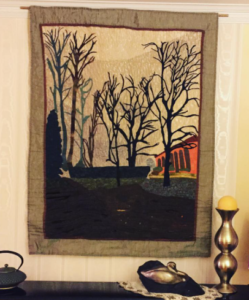
Why look, there’s a sculpture by Ross Matteson with Trees in the Rain
Ross Matteson urged me repeatedly to take photos, which I will, I promise. I think he meant before I put them on display, but um, that didn’t happen.
The three quilts are all based on New England settings and experiences. I think they are nice examples of my art quilt tendencies: hand work, felted wool and dabbling with book making techniques in my quilting. Having said that, I realistically admit that a current quilt is a whole cloth, machine quilted piece.
Am I avoiding the fact that I should take photos before the work heads out the door? Undoubtedly yes.
So imagine my delight when the @MelroseArts Instagram feed reposted @ColorMyWorldCrochet’s post.
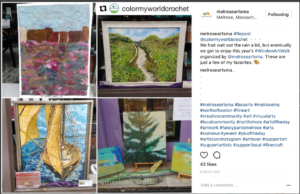
There’s my art quilt in the top left corner! This is from my series, “Boston Women’s March.”
Thank you ColorMyWorldCrochet! And check out her Etsy page… she has very cool slouchy beanies and stylish hats.
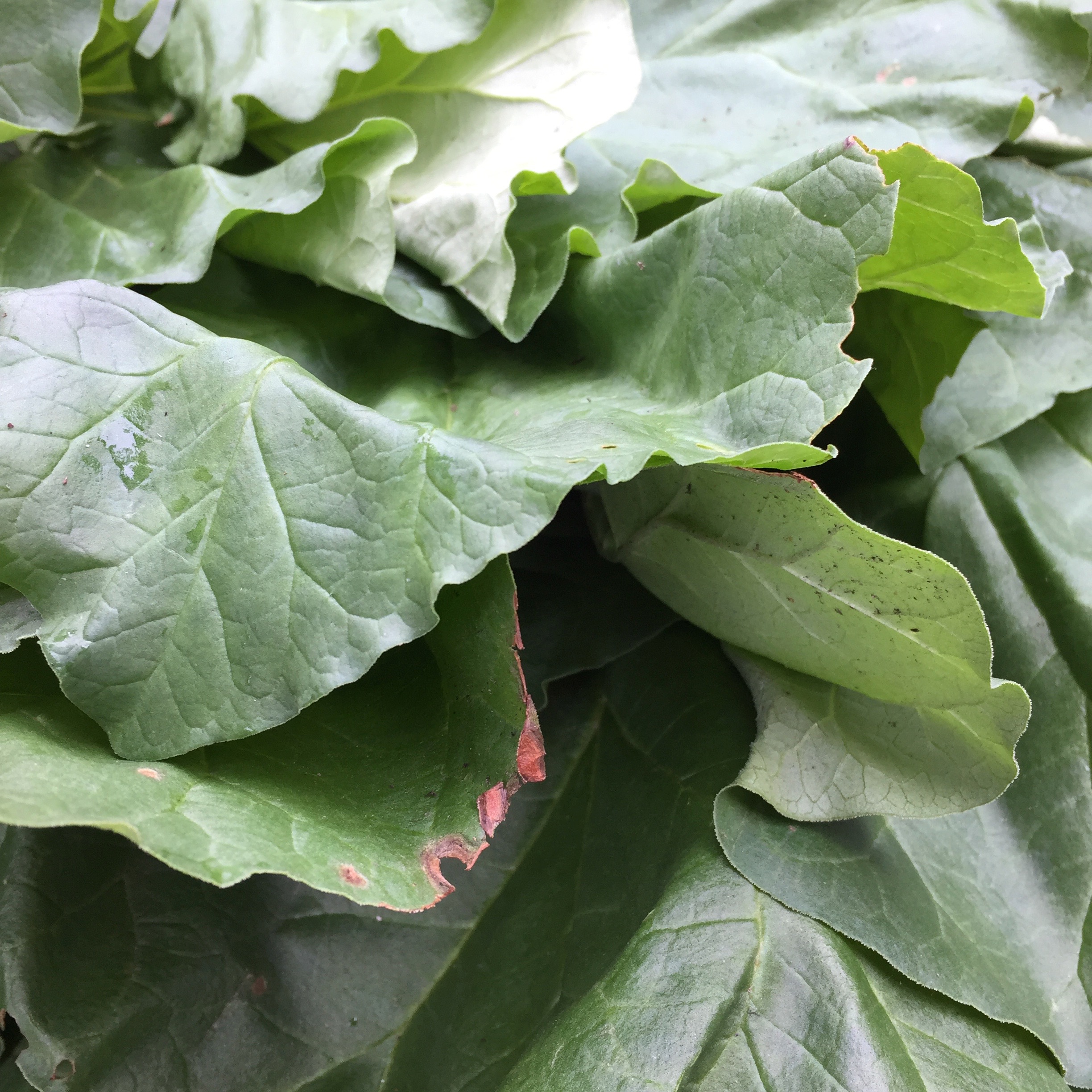
Sep 25, 2017
It is time. Time to stop reading, planting, nurturing and foraging. It’s time to start my journey into natural dyes. My first bite into this aromatic and interesting exploration is to make a mordant from rhubarb leaves.
“What is a mordant,” you ask?
The water based, delightful tonic binds the color to the fiber – chemistry in action. A mordant’s role in dyeing fiber is particularly important as natural dyes tend to fade. If I spend my time on an art quilt, longevity and conservation are paramount. I’ll do what I can to ensure this piece will be around for a long while.
As in many journeys, where would we be without our support network? Thanks to a dear friend who shared 1.5kg of gorgeous rhubarb leaves (and even stalks to eat!).
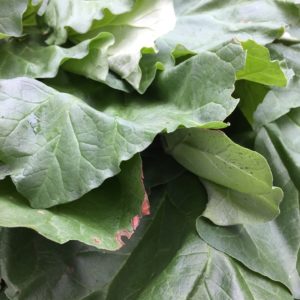
My young rhubarb plant doesn’t have nearly as many beautiful leaves, so I’m grateful for this contribution.
With an enamel pot found at a Savers, my “elixir” topped my camping stove on Saturday night. It’s not exactly singalong or s’more style, but the desired results were attained (or at least, I hope so… wait and see the final results). After simmering for several hours and sitting in the bath all night, I hope this mordant will do the trick.
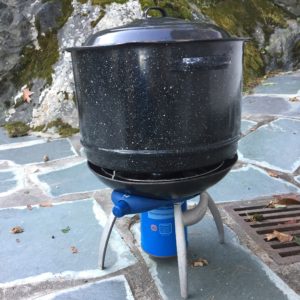
I’m gathering pokeberries and putting them in the freezer to create a dye bath that hopefully will not be too fugitive… using a recipe from Chris MacLaughlin’s A Garden to Dye For: How to Use Plant from the Garden to Create Natural Colors for Fabrics and Fiber.
Next up? Picking up acorns before the squirrels get them all! Wish me merry mordant making.
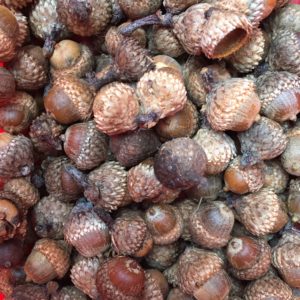
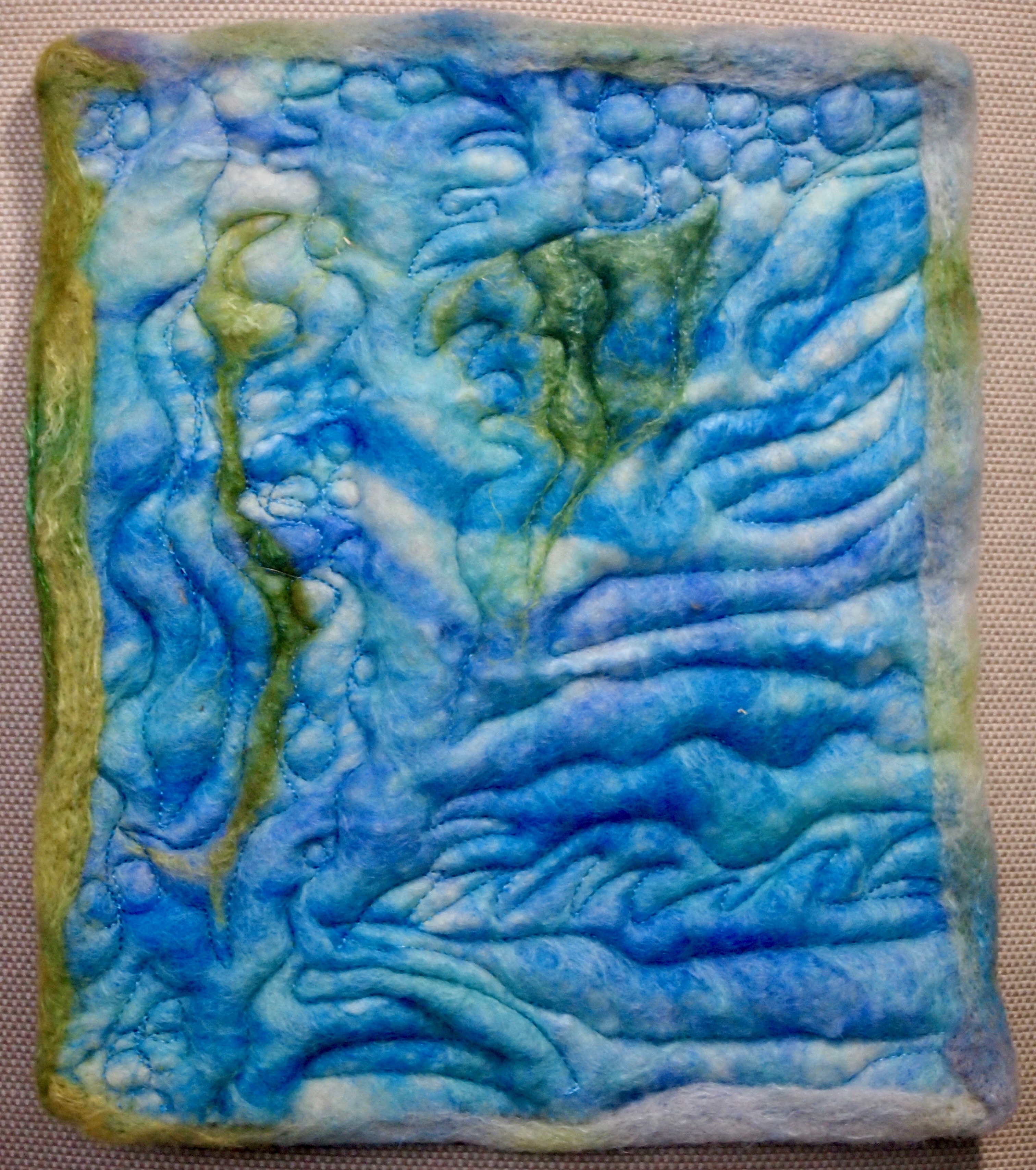
Dec 27, 2016
When the Studio Art Quilt Associates announced their 2017 Member Trunk Show, I had a pretty good idea of what I might send. After all, the portrait orientation letter sized quilt could easily grow from a nuno felting day inspired by the greens and blues of warm weather swimming toward shore.
The big question: How to bind this tiny quilt? I love the flowing color that comes with nuno felted pieces. A traditional fabric binding can be so stiff and angular. A facing would have worked, but I should have considered that before I cut my final size. What to do?
Somehow, the answer came to me as I babbled at our NOBO SAQA break out group… a felted binding! This time, I tried needle felting. Maintaining uneven edges, I needle felted the binding to the finished quilt top and sewed it to the quilt back. It took much longer than expected.
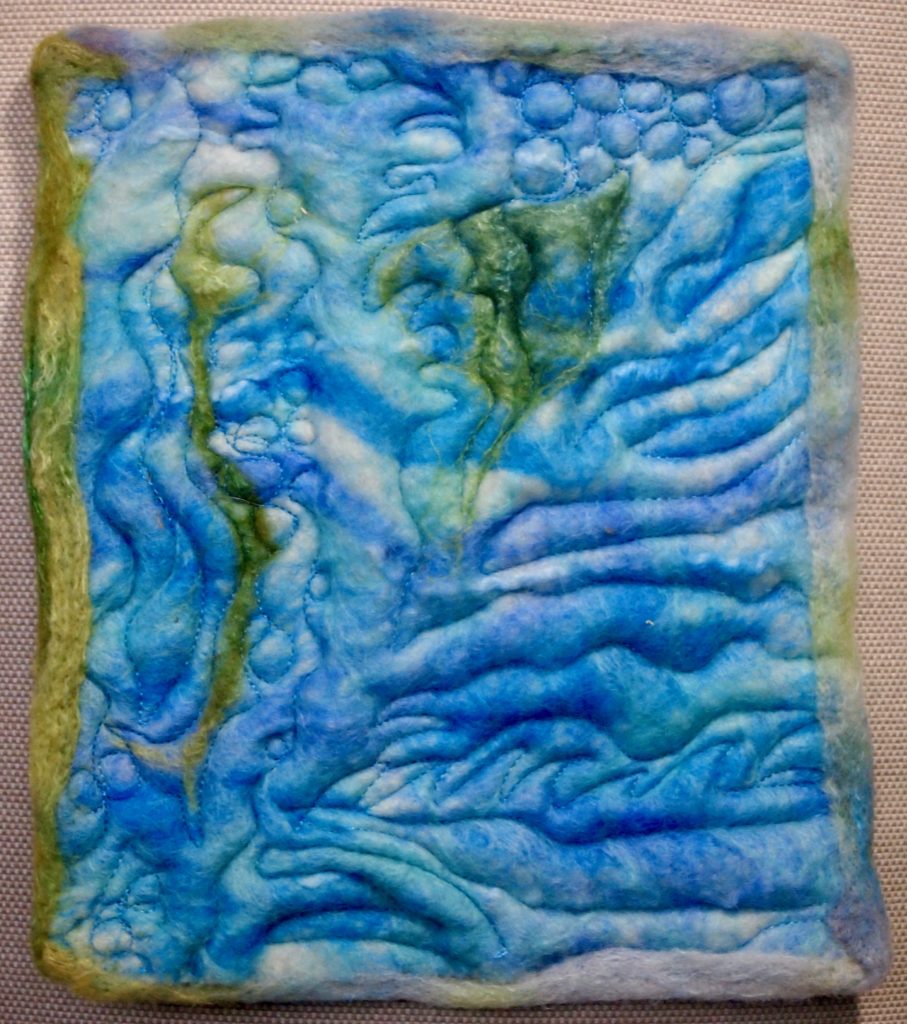
Turtle Grass II
Now it’s time to send this piece out for its traveling adventures. Fair winds, oh little quilt.
Save
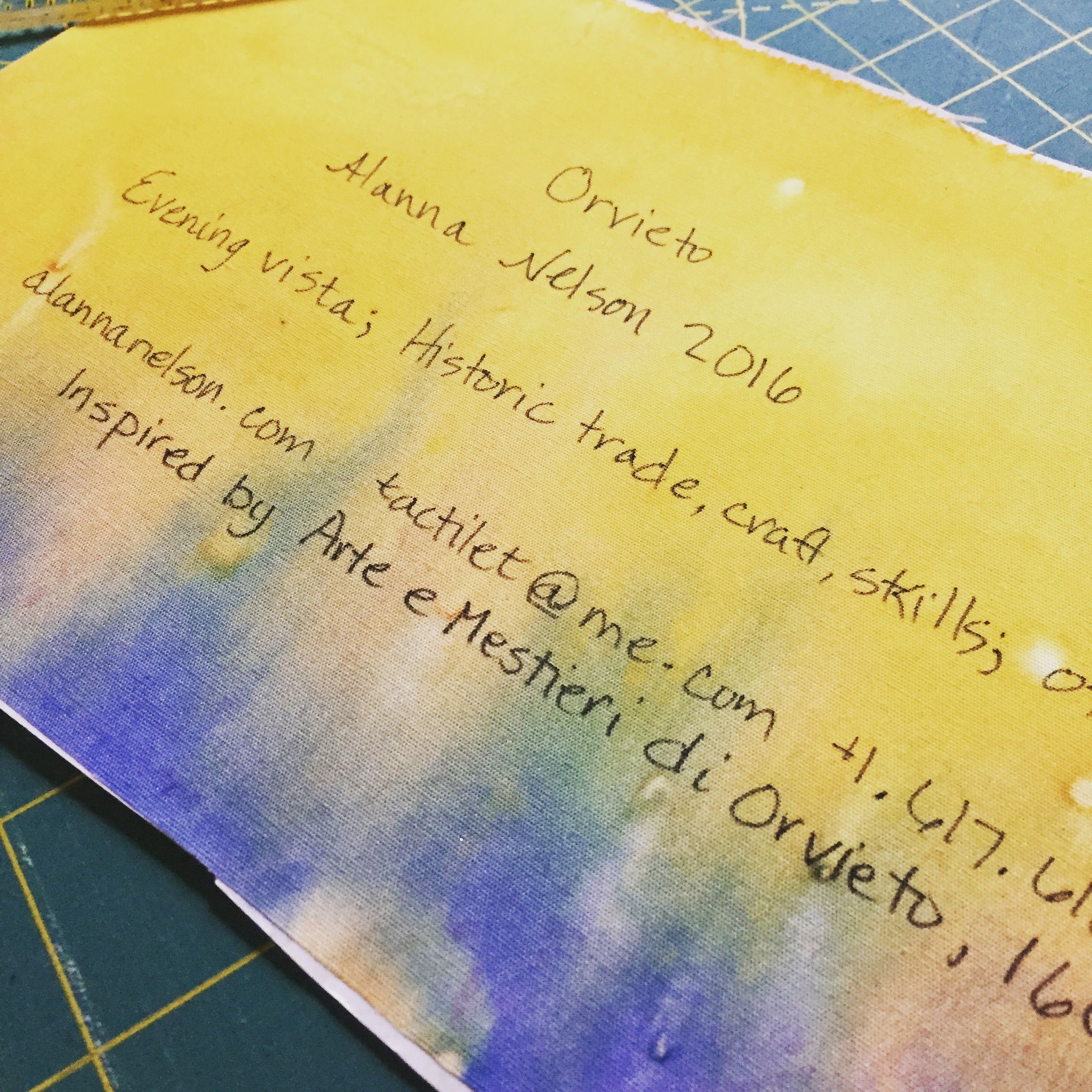
Dec 26, 2016
From a stack of library books, a quilt was inspired. The Celery Stick block from Marnie Buck and Jilly Guffy’s Quilt du Jour was supposed to quickly yield a nice big quilt top to build my machine quilting skills. Oh, well. Quilt and quick aren’t really two words that go together.
The Celery Stick block is easy to piece and scale up or down. Shopping my stash, deep night blues and yellows formed the color palette. Oh, yes, an Italian hilltop town at night could totally be an option. Many great memories of day trips to this northern Lazio town were reason to start strip cutting.
But what to quilt? After all, the whole purpose of this quilt is: 1) to play and enjoy the quilting process 2) to create a warm queen size bed cover 3) to be challenged. Then it occurred to me. I could quilt in the guild symbols of 18th Century Orvieto to build my skills.

Arte e Mestieri di Orvieto
The Guilds of Orvieto depict the reliance on textiles in 18th Century Orvieto’s economy. I remember the afternoon spent chatting with a gentleman who made terra cotta representations of these Guild mascots. I bought one as a gift. I wish I’d purchased more. So here is my quilt that is inspired by Oriveto which hung at the 2016 Rising Star Quilt Show
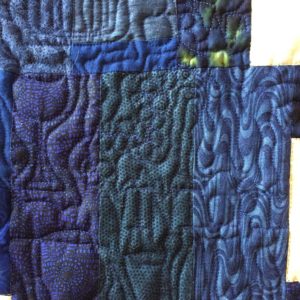
Vintner was one of the easier quilt shapes to dress.
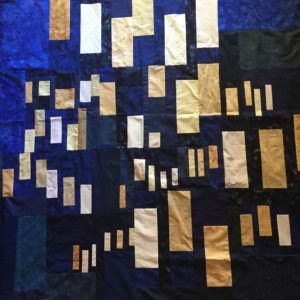
Detail of the quilt top.
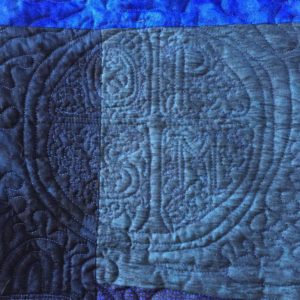
The Oriveto City Seal
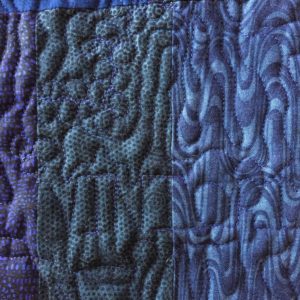
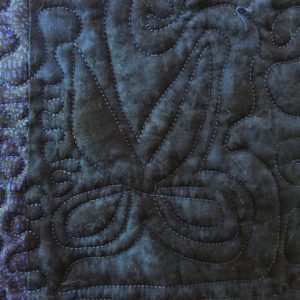
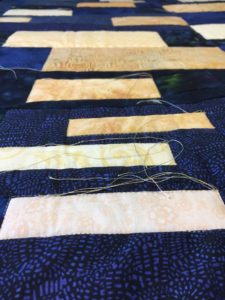
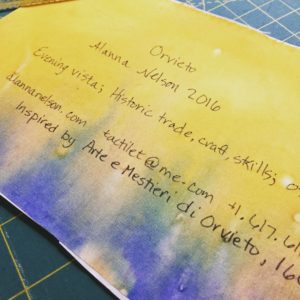
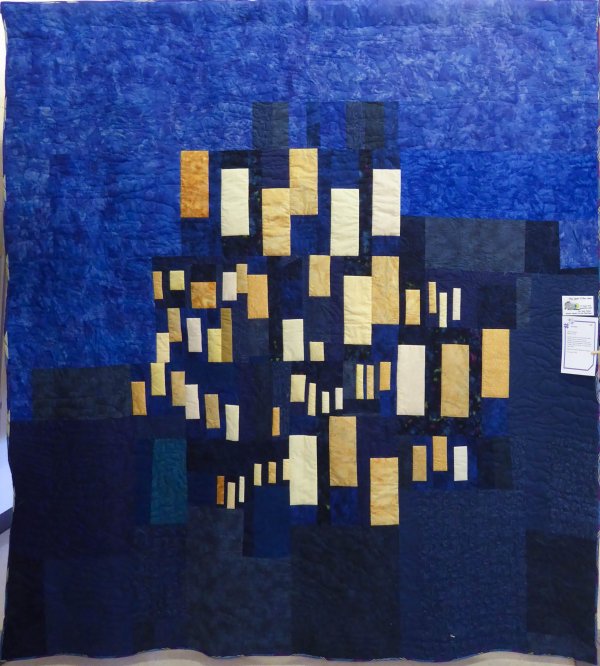
Orvieto as it hung at the RSQ show
Save
So think of me if you’re ever on vacation and you find you cannot sleep forever. I’m under this wonderful quilt with twinkling lights and wonderful wool batting.
Save
Save
Aug 18, 2016
While I may forget a comb or pajamas, it is rare that I hit the road without knitting or reading. On a recent overnight sail, I found myself in one of Gloucester’s book stores, looking for a quick read.
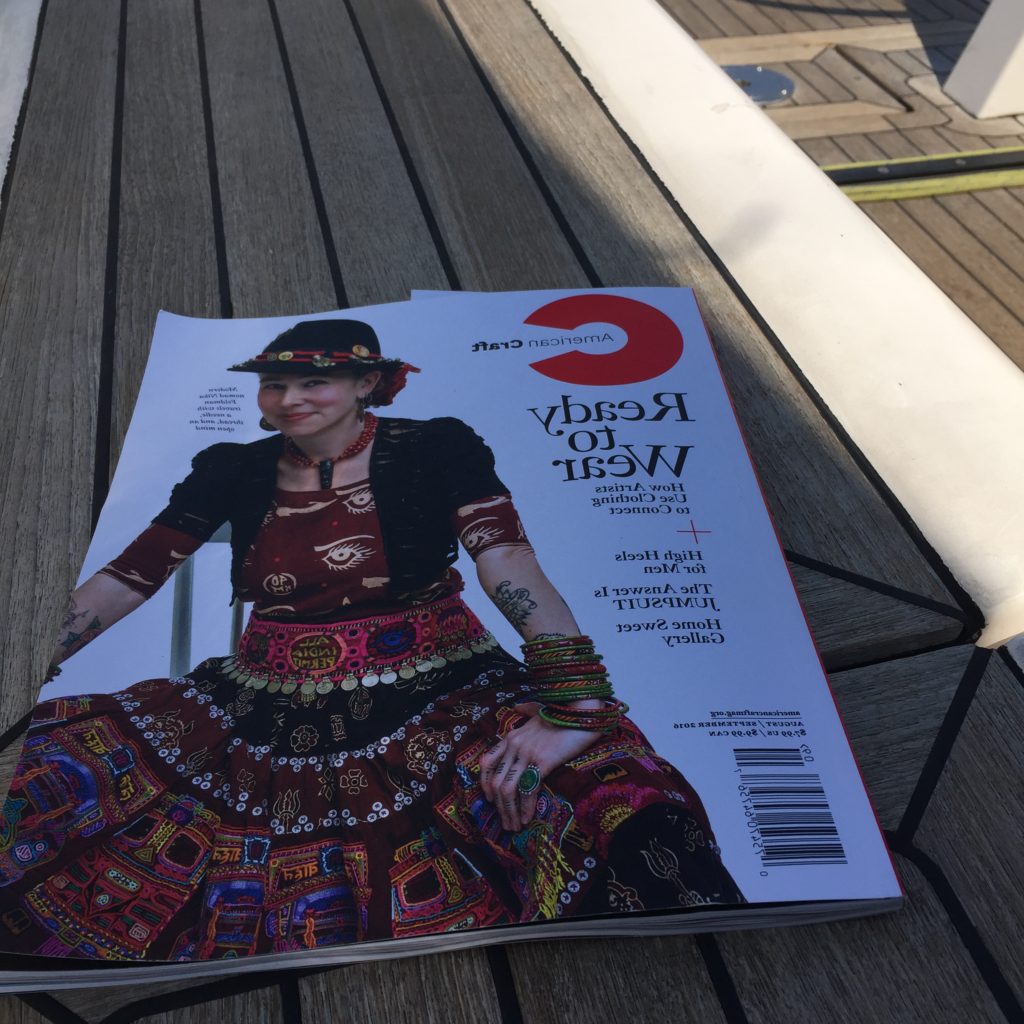
All magazines on deck!
Unwilling to commit myself to an entire book, I picked up the most recent American Craft magazine. Nika Feldman, the subject of the August/September feature, is a woman after my own heart. This woman travels, relates, communicates with a needle, thread and scissors. I always travel with knitting needles and yarn, eschewing quilting as less portable. How could that change?
Mulling over ways to bring quilting into my travels, I realize that a sketchbook and pencil fell of my travel packing list. Ten years ago, these tools lived in my purse. The arrival of the iPhone pushed it out of my bag. It was too easy to snap a photo, and my purse was lighter, smaller. Sketching should re enter my daily habits and most definitely return to my travel packing list. Shouldn’t everyone draw?
At one time, drawing was a skill crucial to education. Travel journals consisted of words, sketches, watercolors. Of course, at this point, I always turn to Isabella Stuart Gardner’s travel journals. As she neared the end of her life, Isabella burned her letters, but chose to keep her travel journals. How do you remember your travels? Selfies? T shirts? Art? Magnets? Post cards or other ephemera? Matchbooks, coasters or cocktail napkins?
Would drawing change your relationship with the place? Clearly, traveling with a needle, scissors and thread completely frames Feldman’s work. She has the benefit of time on her side… no quick sailing trips to Gloucester… but your travel experience would definitely change if you drew or stitched.
So much for deckside knitting comtemplation.
May 9, 2016
Writing a Studio Art Quilt Associates member profile about myself sent me scampering for quilt images. Turning to the CDs, flash drives and cloud storage nooks where my art quilt photos lurk, I found some nice memories.

Detail from “The Road to School,” 1999.
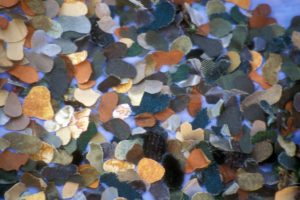
Detail “Road to School,” 1999
It took forever to sew these pinky nail sized leaves onto the Road to School. At that point, I would machine quilt for the bed, but art quilts were always hand quilted. Now I use a longarm or hand quilt, depending on the statement and effect desired.
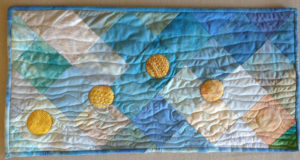
Bright Sky II, 2013
I couldn’t easily find CDs of some professionally photographed quilts. Ack. There are quilts that I never photographed, some of which I’ll probably never see again.
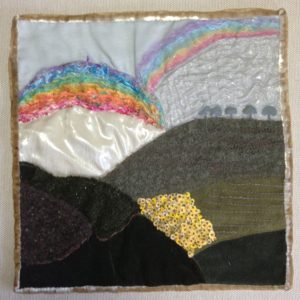
Gioia’s Rainbows, 2003
This little journey down quilt memory lane shows how pursuing the Master Hand Knitter program has reduced my quilting since 2013. That will soon be out of my life so I can focus on quilting more.
I hereby declare:
to photograph all completed quilts from this day forth, establishing a data storage policy which shall make future retrieval of digital images more efficient.

























